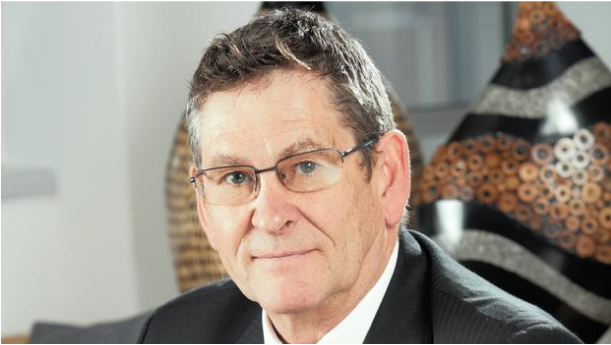It makes sense to have a clear policy and strategy in energy supply

Paul Fitzsimons, Gibb Power and Energy Services sector General Manager
JOHANNESBURG – In determining the ideal energy mix for South Africa, there is no objective truth. What is the ideal energy balance between various energy resources? Should we embrace renewable energy, and phase out fossil fuels entirely? Would this approach be able to meet the country’s growth needs? The halted nuclear build programme promise 9.6GW of power, but can the country afford it?
What’s certain is that nobody should put all their eggs in one basket.
Germany, for example, has made a policy decision to transition to a low carbon economy with the exclusion of nuclear. It remains to be seen to what extent this is financially and practically sustainable in the long term.
The German approach has seen a total disruption to the role of traditional base load suppliers, which are effectively now relegated to being top-up suppliers for when renewables companies cannot meet demand due to low solar irradiance or calm winds. The addition of rooftop and embedded power generation systems has resulted in traditional large utility business models seeming suddenly outdated.
This is perhaps reflected in the more than 50percent reduction in share prices over the last two years for the two largest utilities in that country.
Upon reflection, the South African Independent Power Producers’ (IPP) model has emerged as quite effective. Prospective power producers bid for 20-year periods at a fixed price. With this model, the country at least knows what it has to deal with and can plan accordingly.
Unfortunately, now even that IPP model is in some doubt, after former Energy minister Mmamoloko Kubayi told IPPs to accept less than 77c per kW/* , if they want to secure power purchase agreements.
The proposed nuclear build hangs in the balance after the Cape High Court declared nuclear inter-governmental agreements with the US, Russia and South Korea unconstitutional. Besides this, the affordability of the nuclear builds must still be conclusively demonstrated.
However, as a solution, there is also the fact that building power plants is a tool to catalyse industrial development. Coal-fired power plant Medupi, for instance, injected significant investment into the economy, and we do require some excess capacity to facilitate economic growth.
The energy debate tends to become polarised, into the renewables-or-nothing camp and the big baseload, monopoly state-owned enterprise camp. To say it’s an either/or question is a little simplistic.
The trend internationally is for the supply networks to be publicly owned, and for generation to be largely privately owned. There has to be some state involvement in the supply of power, but where it should be needs an open debate.
There is a balance to be struck. Every electricity source has a role to play. Solar, especially in South Africa, is a no-brainer, we are endowed with some of the best resources on the planet. Our sunlight is dependable. A solar farm in the Northern Cape can supply a steady, reliable stream of power that can be fed into the grid.
It is also scalable, and storage of renewable power is becoming more feasible as batteries become more economically efficient.
If we could find policy certainty, an optimal energy mix would probably involve several large anchor power stations, with a significant renewables component. Gas also has a role to play.
The proposed African Renaissance Pipeline has yet to materialise, but what few realise is that gas doesn’t require pipelines thousands of kilometres long. Gas is a commodity. It can be purchased on the global market and shipped in.
The other aspect of the energy industry to be considered is its job-creation effect. At the moment, power station builds are not long-term job creators. We have to decide whether we want to create careers, or just jobs.
At Medupi and Kusile, not much of the core technology is home grown. Most of the investment in capital equipment is in hardware sourced from overseas. Even with renewable energy, this is the case, if one considers the components that go into a wind power station, the turbines come from overseas.
As far as operations and maintenance goes, increasingly wind farms are operated online from control rooms situated a large distance from the site, including overseas. In the rare case of a malfunction, a staffer monitoring a screen in Europe can pick up a phone and send out a local technician. There aren’t many careers in that.
Solar is similar. The biggest operational element is hiring workers to occasionally polish the solar panels. Electricity infrastructure in general is not a huge employer once it’s up and running. Capital manufacture, on the other hand, is.
South Africa should use the opportunity of the current foreign direct investment in power plants – coal-fired and renewable – to grow local expertise and build a power technology industry.
We could then begin to tap into African markets, manufacturing power technology and exporting it into the continent.
In conclusion, there is no silver bullet supply solution for the South African energy situation. We will succeed by choosing the energy mix that best suits us and our economy, but we need a functional policy environment and transparent governance processes to enable this.
The market does require restructuring – as it has for the past several years. Public-private partnerships have been shown to work, and the policy around this should be finalised.
We also require clarity. The Integrated Resource Plan, which governs the energy mix has not been updated since 2010.
In a climate of rapid change, it makes sense to have a clear policy and strategy that accommodates the disruptive transitions we are experiencing and enables the adoption of technological innovations in a way that can radically contribute to the transformation of our energy economy and society as a whole.
Paul Fitzsimons is Gibb Power and Energy Services sector general manager.
https://www.iol.co.za/business-report/energy/opinion-it-makes-sense-to-have-a-clear-policy-and-strategy-in-energy-supply-11696855



